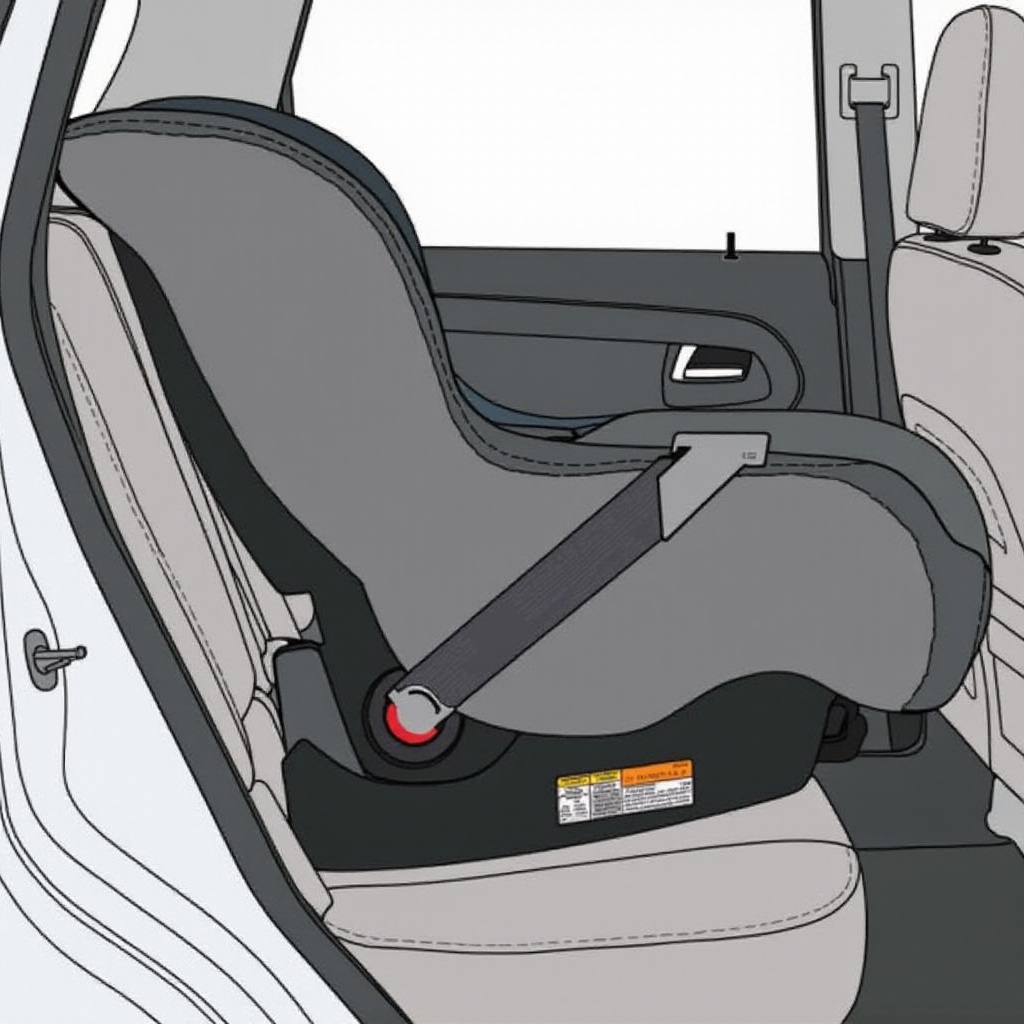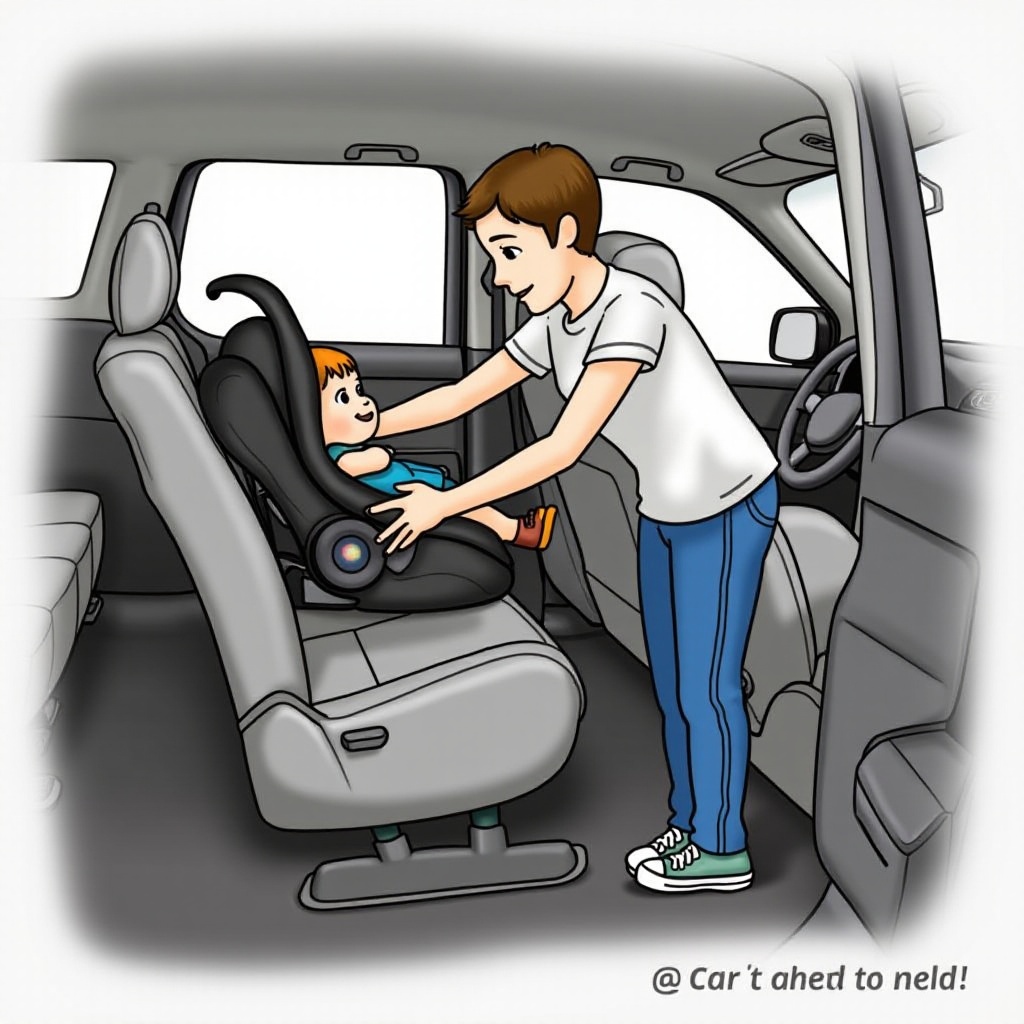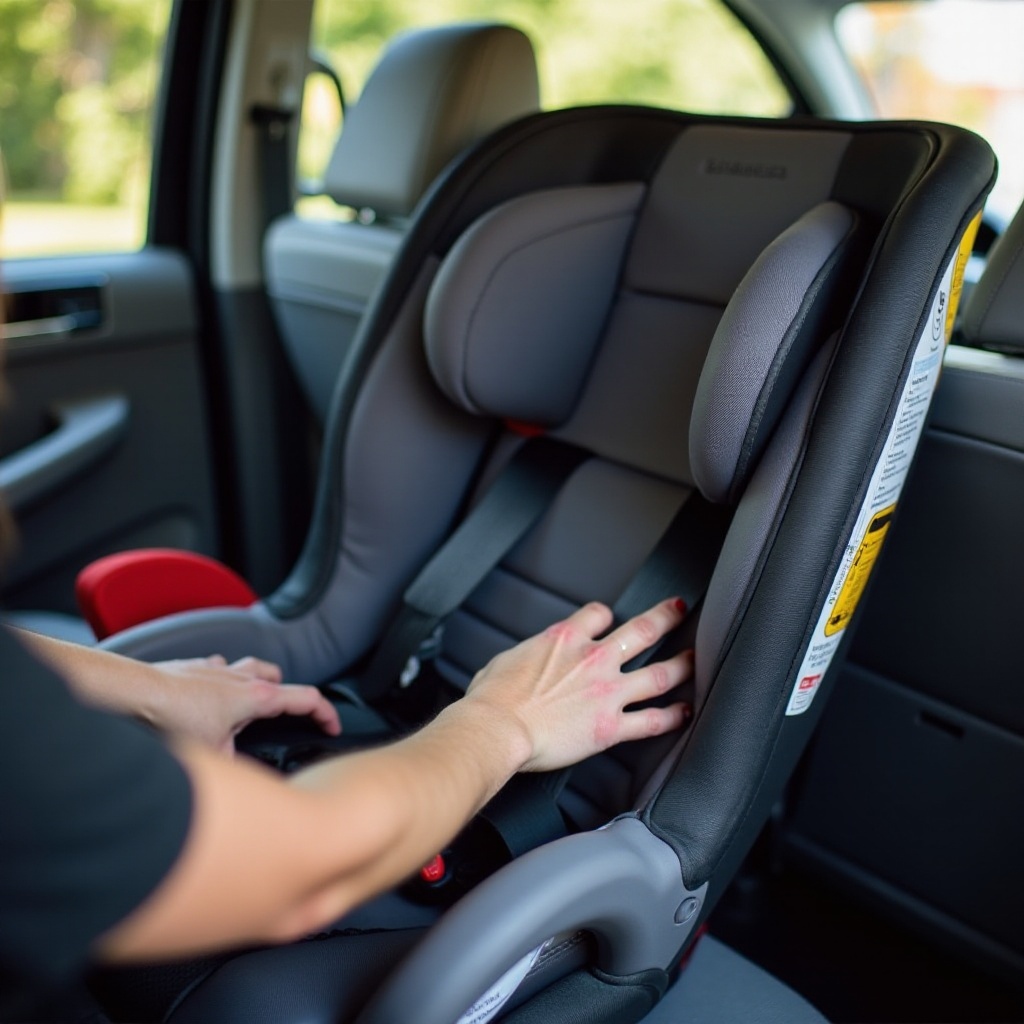Introduction
Properly installing a car seat without the base is crucial for ensuring child safety during travel. Whether you are traveling or frequently need to switch between multiple vehicles, knowing how to secure a car seat without its base provides essential flexibility. This comprehensive guide will walk you through a detailed, step-by-step process, empowering you to confidently use a car seat securely without its accompanying base.

Understanding Different Types of Car Seats
Before jumping into the installation process, it’s vital to understand the primary types of car seats available. Each type is designed for different stages of your child’s growth and comes with distinct installation requirements.
- Infant Car Seats: These are typically used for newborns and babies up to about two years old. They feature a detachable base that simplifies the process of transferring the seat between vehicles or into strollers.
- Convertible Car Seats: These seats are designed to adapt as your child grows, starting as rear-facing seats for infants and becoming forward-facing for toddlers.
Knowing the specifics of your car seat type is crucial before installation. This knowledge helps in understanding the adjustments necessary when the base is not being used.
Why Install a Car Seat Without the Base?
There are several situations where you might choose or need to install a car seat without its base:
- Convenience in Travel: When traveling or using rental cars, carrying a bulky base can be inconvenient. Knowing how to install the seat without a base becomes beneficial.
- Multiple Vehicle Use: Families often switch car seats between different vehicles. Mastering base-free installation saves time and effort when moving a seat between cars.
Understanding these scenarios highlights the necessity of mastering the technique of car seat installation without the base to ensure flexibility and consistent safety for your child.
Preparing for Installation
Preparation is an integral part of installing a car seat safely and effectively without its base. Having everything ready from the start can streamline the installation process.
- Gather Necessary Equipment: Ensure you have the vehicle’s manual and the car seat instruction booklet at hand. Additional tools such as a locking clip might come in handy if needed.
- Determine Proper Seat Position: The ideal position for most car seats is the middle of the back seat, which is often considered the safest spot in the car.
Taking these preparatory steps will ease the installation process and reduce the potential for installation errors.

Step-by-Step Guide to Installing Without a Base
Follow these steps to efficiently install a car seat without its base:
- Securing with the Vehicle’s Seat Belt: Begin by threading the seat belt through the appropriate belt path on the car seat. Ensure that the seat belt is lying flat and straight across the path.
- Adjusting the Recline Angle: Most car seats have a level indicator. Adjust the recline until the seat sits at the recommended angle for your child’s age and weight.
- Ensuring Tightness and Stability: Once the seat belt is buckled, pull it to make sure it holds the seat tightly. The seat should not move more than an inch side-to-side or front-to-back when checked at the belt path.
These detailed steps ensure that the car seat is secure and safe for travel, providing peace of mind that your child is protected.
Safety Checks Post-Installation
With the car seat installed, performing a few critical safety checks is necessary to confirm everything is secure:
- Verifying Harness Fit: Check that harness straps fit snugly on your child, lying flat without any twists, and with the chest clip positioned at armpit level.
- Double-Checking Seat Stability: Reconfirm that the car seat remains stable. It should be firmly in place with minimal movement for added safety.
Consistent safety checks are essential in ensuring continued security throughout your travels, safeguarding your child at all times.
Common Mistakes to Avoid
Even with a solid understanding of the installation process, several common mistakes can undermine the car seat’s security:
- Incorrect Belt Path: Ensure the seat belt is correctly fed through the car seat’s designated belt path as per manufacturer instructions.
- Over-tightening vs. Under-tightening: While it’s important to make sure the seat is fastened securely, avoid overtightening as it may damage the car seat.
Avoiding these mistakes enhances the effectiveness and safety of the car seat installation.

Expert Tips for Effective Installation
Here are some insightful tips that can further refine your installation technique:
- Using Built-in Lock-offs: Exploit any inherent lock-off systems on the car seat designed to hold the seat belt firmly in place.
- Engaging Tether Straps: If your model includes a top tether strap, hook it to the vehicle’s tether anchor for added stability.
These expert tips offer additional security and installation enhancements, further ensuring your child’s safety during travel.
Conclusion
Learning to install a car seat without the base is a practical skill that extends your ability to keep your child safe across different travel scenarios. Thorough preparation, attention to detail in installation, and continuous safety checks ensure that you are well-equipped to handle car seat setups with confidence and care.
Frequently Asked Questions
Can all car seats be installed without a base?
Most infant car seats and some convertible car seats allow installation without a base. Always consult the manufacturer’s instructions to confirm capability.
Is installing a car seat without a base as safe as with a base?
If done correctly, installing a car seat without a base can be just as safe as using a base, provided all installation and safety guidelines are followed.
How often should I check my car seat for secure installation?
It is recommended to check the installation every time before use, ensuring both the harness and seat belt are appropriately positioned and secure.

0 Comments